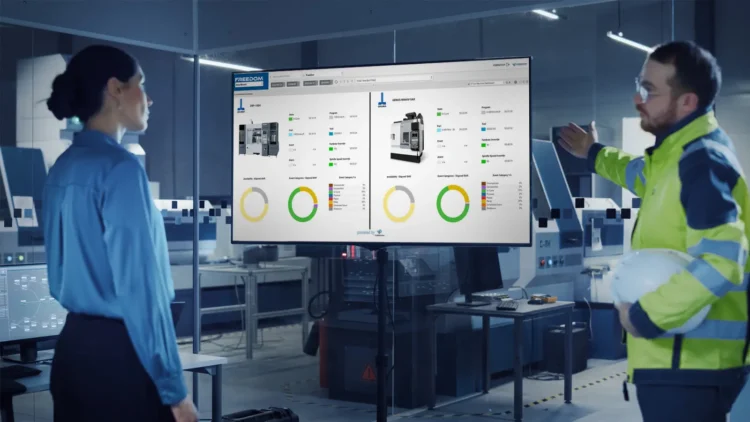Are you looking to enhance the efficiency and safety of your industrial processes? Look no further than SCADA (Supervisory Control and Data Acquisition) systems. SCADA empowers you to monitor and control your operations in real time, providing you with the insights needed to optimize your processes and ensure regulatory compliance.
With SCADA, you can collect and analyze data in real time, allowing you to make informed decisions on the spot. This level of control and visibility enables you to identify and address any issues or bottlenecks as they occur, minimizing downtime and maximizing productivity.
By leveraging SCADA technology, you can enhance your operational efficiency, improve production processes, and reduce costs. Additionally, SCADA ensures the safety of your workforce by providing real-time monitoring of critical parameters and allowing for immediate action in case of emergencies.
As technology continues to evolve, SCADA is poised to play an even more significant role in industrial processes. Stay ahead of the curve and explore future trends and innovations in SCADA technology to further optimize your operations.
Understanding SCADA Systems
SCADA systems are like the superheroes of industrial processes, providing real-time monitoring and control to keep everything running smoothly. To understand SCADA systems, it’s crucial to delve into their architecture.
A typical SCADA system consists of three main components: the supervisory system, remote terminal units (RTUs), and programmable logic controllers (PLCs). The supervisory system serves as the central hub, collecting and processing data from RTUs and PLCs. RTUs act as the interface between the physical equipment and the supervisory system, while PLCs control the actual industrial processes.
This architecture allows SCADA systems to provide real-time updates and enable operators to make informed decisions promptly. However, with the increasing reliance on interconnected networks, SCADA security becomes a paramount concern. Protecting against cyber threats and ensuring data integrity are vital aspects of implementing SCADA systems in industrial processes.
Real-Time Data Collection and Analysis

Get a clear picture of your operations by collecting and analyzing data in real time. With SCADA systems, you can visualize data in various formats, such as graphs, charts, and dashboards. This allows you to easily monitor the performance of your industrial processes and identify any potential issues. Real-time data collection enables you to make informed decisions quickly, improving efficiency and productivity.
Additionally, SCADA systems support predictive maintenance by analyzing historical data and identifying patterns that indicate potential equipment failures. By detecting problems before they occur, you can schedule maintenance activities proactively, minimizing downtime and reducing costs.
With SCADA’s real-time data collection and analysis capabilities, you can optimize your operations and ensure smooth and reliable industrial processes.
Enhancing Operational Efficiency with SCADA
Improve your operational efficiency by leveraging the power of real-time data collection and analysis with SCADA systems. SCADA, or Supervisory Control and Data Acquisition, allows you to monitor and control industrial processes in real time, enabling you to make informed decisions to improve productivity and optimize resource allocation. With SCADA, you can collect data from various sensors and devices, providing you with a comprehensive view of your operations.
By analyzing this data, you can identify bottlenecks, inefficiencies, and areas for improvement. SCADA systems also enable you to automate routine tasks, reducing manual errors and freeing up your workforce for more value-added activities.
By utilizing SCADA, you can streamline your operations, minimize downtime, and maximize productivity, ultimately enhancing your overall operational efficiency.
Ensuring Safety and Regulatory Compliance

Ensure the safety of your operations and compliance with regulations by leveraging the power of real-time data collection and analysis. With SCADA, you can effectively monitor and control industrial processes, ensuring that safety standards are met and regulatory requirements are complied with. SCADA systems provide real-time visibility into critical parameters such as temperature, pressure, and flow rates, allowing you to identify and address potential safety hazards promptly.
By continuously monitoring these parameters, SCADA enables early detection of deviations from safety standards, enabling proactive measures to be taken to prevent accidents or equipment failures.
Furthermore, SCADA systems can generate comprehensive reports and logs, which can be used to demonstrate compliance with regulatory requirements. By utilizing SCADA, you can enhance safety, minimize risks, and ensure regulatory compliance in your industrial operations.
Applications of SCADA in Industrial Processes
Maximize the efficiency and productivity of your operations by harnessing the power of real-time data analysis and remote management capabilities provided by SCADA systems. With SCADA, you can remotely access and monitor your industrial processes, allowing you to make informed decisions and take immediate action when needed.
SCADA also enables predictive maintenance, which helps you identify potential issues before they escalate into costly problems. By analyzing real-time data, SCADA systems can detect patterns and trends, allowing you to optimize your processes and reduce downtime.
With predictive maintenance, you can schedule maintenance activities based on actual equipment conditions, reducing the risk of unexpected failures and improving overall reliability. SCADA empowers you to have full control and visibility over your industrial processes, ensuring operational efficiency, safety, and regulatory compliance.
Future Trends and Innovations in SCADA Technology

The future of SCADA technology is filled with exciting possibilities and groundbreaking innovations that will revolutionize the way industries operate and make decisions. One major trend is the integration of artificial intelligence (AI) into SCADA systems.
AI algorithms can analyze vast amounts of real-time data and provide predictive insights, enabling proactive decision-making and optimization of industrial processes. This integration will enhance efficiency, reduce downtime, and improve overall productivity.
Additionally, cybersecurity measures are becoming increasingly important as SCADA systems become more interconnected and vulnerable to cyber threats. Technologies such as advanced encryption, intrusion detection systems, and vulnerability assessments will play a crucial role in safeguarding SCADA networks.
As industries continue to rely on SCADA for real-time monitoring and control, the future holds immense potential for AI integration and enhanced cybersecurity measures in SCADA technology.
Conclusion
In conclusion, SCADA systems play a crucial role in empowering real-time monitoring and control in industrial processes. With its ability to collect and analyze real-time data, SCADA enhances operational efficiency, ensuring optimal performance and minimizing downtime.
Additionally, SCADA systems contribute to safety and regulatory compliance by providing accurate and timely information. The applications of SCADA in various industries are vast, from manufacturing to oil and gas.
Looking ahead, future trends and innovations in SCADA technology hold promising advancements in scalability, cybersecurity, and integration with emerging technologies.
 Hi Boox Popular Magazine 2024
Hi Boox Popular Magazine 2024



